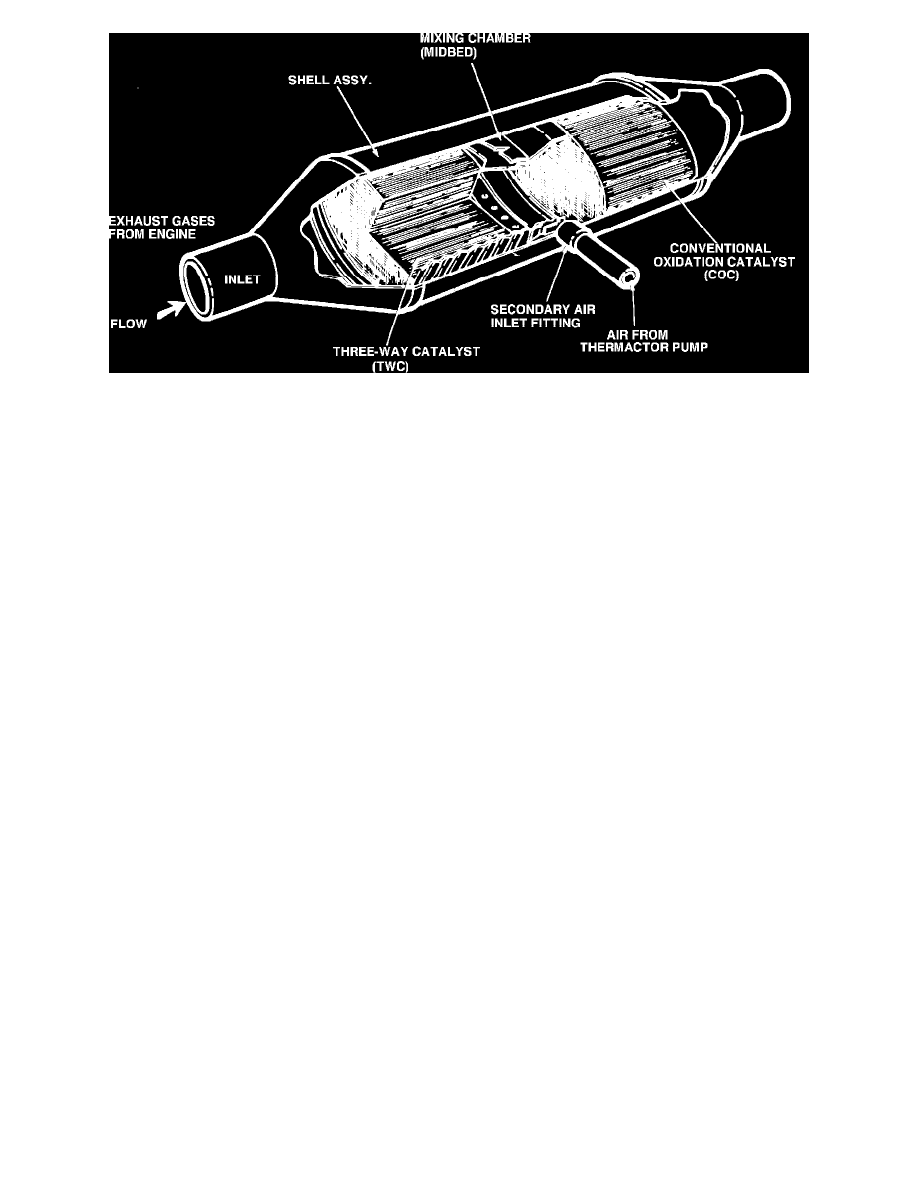Bronco L6-300 4.9L VIN Y 1-bbl (1983)

Fig. 6 Dual type catalytic converter
The catalytic converter used on some vehicles, serves two purposes: it permits a faster chemical reaction to take place and although it enters into the
chemical reaction, it remains unchanged, ready to repeat the process. The catalytic converter combines hydrocarbons (HC) and carbon monoxide (CO)
with oxygen to form water (H2O) and carbon dioxide (CO2).
The catalyst is structured in the form of a honeycomb monolithic composition, Figs. 4,5 and 6 . The catalyst consists of a porous substrate of an inert
material, coated with platinum and other noble metals (the catalytically active materials.) This device, located in the exhaust system between the
exhaust manifold and muffler, requires the use of heat shields, in some cases, due to its high operating temperatures. The heat shields are necessary to
protect chassis components, passenger compartment and other areas from heat related damage.
A small diameter fuel tank filler tube neck is incorporated to prevent the larger service station pump nozzle, used for leaded fuels, being inserted into
the filler tube, thereby preventing system contamination. Since the use of leaded fuels contaminates the catalysts, deteriorating its effectiveness, the
use of unleaded fuels is mandatory in vehicles equipped with catalytic converters. The catalytic converter can tolerate small amounts of leaded
fuels without permanently reducing the catalyst effectiveness.
There are basically three types of catalysts, the conventional oxidation catalyst (COC) containing Platinum (Pt) and Palladium (Pd) which are effective
for catalyzing the oxidation reactions of hydrocarbons (HC) and carbon monoxide (CO) emissions. A three-way catalyst (TWC) containing Platinum (Pt)
and Rhodium (RH), is not only effective for catalyzing the oxidation reactions of HC and CO emissions, but it also catalyzes the reduction of nitrogen
oxides (NOx). A light off catalyst (LOC) is a single bed converter. It is arranged in series with the main catalytic converter assembly of COC and/or
TWC as the aft member(s). This converter is designed to perform the very specialized function of exhaust emission control during engine warm-up when
the main converter(s) is not yet at the temperature required for maximum efficiency. The LOC is designed to operate effectively in the high
environmental conditions that exist near the manifold flange. The LOC is designed with a minimum heat sink effect and, provides minimum delay in
warm-up of the main catalytic converter(s). The oxidation catalyst requires the use of a secondary air source which is provided by the pulse air or
thermactor air injection systems.
